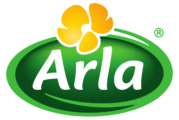Global demand for chocolate is rising, even as consumer concern over sugar, processed foods and wellness reaches new heights. Across the UK, the US, and key Asian markets, confectionery companies are reporting growth not just in premium segments, but also in functional and “better-for-you” formulations once considered niche.
The shift reflects a broader recalibration of what indulgence means in the modern marketplace. Shoppers are eating less in volume but paying more for chocolate that aligns with evolving personal values-whether that means fewer ingredients, higher cocoa content, or the addition of protein and adaptogens.
Multinational players and local upstarts alike are moving quickly to capture this redefined sweet spot. In the US, dark and portion-controlled chocolates are gaining share despite higher prices. In the UK, new regulations on high-sugar foods have prompted a wave of reformulation and repositioning. And in Asia, where per capita consumption remains relatively low, demand is accelerating as chocolate becomes both an aspirational treat and a vessel for functional benefits.
For an industry once synonymous with excess, chocolate is proving remarkably adaptive. What was once a discretionary snack is now being repackaged as self-care-and that subtle shift in perception is proving to be a powerful driver of growth.
A Global Market Defying Expectations
Chocolate’s commercial momentum is not just anecdotal – it’s backed by hard numbers that defy nutritional orthodoxy. While public health messaging around sugar reduction has grown louder, global retail sales of chocolate continue to expand, particularly in markets where health consciousness and affluence are rising in tandem.
Recent industry estimates place global chocolate confectionery sales at around US$130 billion, with steady value growth driven by pricing power, premiumization, and consumer appetite for smaller, higher-quality products. In contrast to other processed snack categories, chocolate has retained pricing resilience and cultural relevance – often viewed not as a vice, but as an acceptable reward.
In mature markets like the United States and the United Kingdom, manufacturers are offsetting flat or declining volumes with premium offerings, clean-label positioning, and targeted innovation. In the US, even as unit sales dipped last year, dollar sales rose. UK consumers, faced with inflation and regulatory pressure on high-fat, sugar and salt (HFSS) products, are adjusting by buying smaller formats or turning to private-label options – but they haven’t walked away from the category.
In Asia, the story is different. Markets like China and Singapore are seeing growing interest in chocolate, particularly among urban, middle-class consumers. Premium brands, often imported, are benefiting from rising disposable income and a gifting culture that values quality and presentation. Even in Japan, where the market has been contracting, companies are finding ways to win back consumers through functional formulations and high cocoa content offerings.
Whether as comfort, status symbol, or perceived health supplement, chocolate’s role is being redefined. And with that reframing comes an expansion in both who is buying – and why.
Changing Consumer Drivers
The growth in chocolate sales isn’t coming from nostalgia alone. It reflects a more nuanced shift in consumer mindset – one that doesn’t reject indulgence, but instead reclassifies it. Chocolate is increasingly seen as compatible with modern lifestyles, not in spite of its decadence but because of how consumers are redefining what balance looks like.
Across markets, there is growing tolerance – even encouragement – for what industry analysts term “permissible indulgence.” Rather than eliminating treats, consumers are looking for control: smaller portions, higher cocoa content, and labels that read more like pantry ingredients than chemistry sets. In the UK, more than a third of chocolate consumers say they are consciously limiting sugar – but not abstaining entirely. In the US, 91% say they’re willing to pay more for chocolate that feels like a personal reward.
What has changed is the framing. Where chocolate once sat squarely in the category of “guilty pleasures,” it’s now more likely to be marketed as self-care. Brands have responded with messaging that leans on mood, mindfulness, and mental health – themes that resonate particularly well with millennial and Gen Z consumers. In Asia, products with added collagen or calming botanicals are performing strongly, positioned as part of a broader wellness routine.
Functionality is part of the equation. But just as important is the emotional rationale. In a volatile global climate, consumers are granting themselves small indulgences, so long as they carry a justification – be it clean ingredients, health benefits, or sustainability claims. Chocolate, perhaps more than any other treat, has adapted to meet that need without losing its core appeal.
| Market | Primary Positioning | Trending Segments | Notable Retail Behavior |
| US | Indulgence-first | Dark, functional, protein-added | Portion control, DTC growth |
| UK | Sustainability/Moderation | Plant-based, lower sugar, private label | HFSS-regulated placement, ethical labels |
| Japan | Functional-first | Stress-relief, GABA, polyphenols | Mini packs, convenience store dominance |
| China | Premium & Aspirational | Imported brands, gift sets | Localized flavors, e-commerce acceleration |
| Singapore | Luxury meets wellness | Vegan, single-origin, no added sugar | Gifting culture, boutique specialty retail |
Innovation in Product Development
Much of chocolate’s resilience can be traced to how aggressively manufacturers have innovated in recent years. The category has undergone a quiet but significant transformation, with R&D efforts focused on meeting modern expectations around health, quality, and purpose.
Product reformulation is now a baseline strategy. Across the UK and parts of Europe, pressure from HFSS regulations and consumer advocacy groups has accelerated the development of lower-sugar alternatives. Major brands, including Mondelēz and Nestlé, have introduced chocolate lines with 30% less sugar, while also cutting artificial additives and using alternative sweeteners like stevia and monk fruit. In the US, Hershey has expanded its zero-sugar range and invested in cleaner labels across its mainstream portfolio.
The fastest-growing segment, however, isn’t necessarily lower in sugar – it’s higher in cocoa. Dark chocolate continues to outperform traditional milk variants, buoyed by its association with antioxidants, reduced sugar, and a more “sophisticated” profile. Lindt & Sprüngli, Ferrero, and other global players have reported strong growth in dark chocolate sales across both Western and Asian markets, supported by expanding ranges with cocoa content of 70% and above.
In Asia, innovation has taken a more functional route. Japanese confectioners, long known for their product precision, have introduced chocolate fortified with stress-reducing botanicals, dietary fiber, and even blood pressure–supporting polyphenols. In China, new launches incorporate traditional ingredients like ginseng or goji berries, often positioned as “balance-enhancing” or “body-friendly.”
At the premium end, smaller brands are leading with single-origin sourcing, artisanal techniques, and clean-label credentials. Their appeal lies not just in purity of ingredients but in transparency – with packaging that highlights cocoa origin, ethical certification, and handcrafted quality. These innovations are helping redefine chocolate as not just permissible, but aspirational – a snack that delivers on taste, health alignment, and brand values simultaneously.
Some of the most telling examples of how chocolate makers are evolving come from established players experimenting beyond their traditional formulas.
In the UK, Mondelēz launched the Cadbury Plant Bar, a vegan version of its flagship Dairy Milk, using almond paste in place of dairy. The move marked the brand’s first foray into plant-based chocolate in nearly two centuries of operation, reflecting not just a shift in ingredients, but a broader strategy to reach flexitarian consumers. While still a small part of total sales, the Plant Bar represents a growing segment within confectionery where plant-based credentials are seen as a proxy for health, ethics, and modernity.
In the United States, Hu Kitchen has carved out a loyal following by doing less. Its clean-label chocolate bars – free from dairy, refined sugar, palm oil, lecithins, and emulsifiers – have thrived in premium health retailers and online marketplaces. The brand’s minimalist packaging and “Get Back to Human” tagline struck a chord with consumers seeking indulgence without compromise. Hu’s rapid success led to its acquisition by Mondelēz in 2021, underscoring how legacy players are using startup acquisitions to absorb innovation.
In Japan, functionality is a competitive advantage. Meiji’s “The Chocolate” line and Lotte’s “GABA-infused” chocolates target adult consumers seeking both pleasure and health benefits. GABA (gamma-aminobutyric acid), a naturally occurring neurotransmitter linked to stress reduction, is featured prominently in Lotte’s marketing, tapping into Japan’s growing demand for mood-supportive snacks. These products are often sold in convenience stores – not as candy, but as part of the functional food aisle.
Taken together, these cases illustrate how manufacturers are navigating a more complex chocolate landscape – where taste is non-negotiable, but health cues, ingredient ethics, and wellness positioning are becoming essential to growth.
Packaging and Positioning as Strategy
As much as product formulation has shifted, so too has the way chocolate is presented – and that evolution is proving just as important in driving consumer uptake. Packaging and messaging have become strategic tools in redefining how chocolate fits into a health-conscious lifestyle. In many cases, what’s on the outside of the bar is doing just as much work as what’s inside it.
One of the most noticeable changes across global markets is the move away from traditional share-size formats toward portion-controlled, individually wrapped offerings. Whether driven by calorie-conscious consumers or regulatory nudges, this shift aligns with broader health narratives. Smaller sizes are marketed not as a cutback, but as a mindful choice. In the UK, major supermarkets have reorganized confectionery aisles to prioritize “treatwise” options, while in Japan and Singapore, individually wrapped squares dominate shelves – reinforcing the idea of moderation and intentionality.
At the premium end of the market, design language has also evolved. Brands are increasingly leaning on matte finishes, minimalist typography, and earthy color palettes to signal quality and modernity. Sustainable packaging has become a competitive differentiator: compostable wrappers, recyclable boxes, and carbon-neutral claims are now common among premium and artisanal brands. According to NielsenIQ, 72% of global consumers say they’re willing to pay more for products that offer sustainable packaging, and confectionery is no exception. In the UK, where eco-consciousness is deeply embedded in consumer decision-making, this has helped smaller brands gain traction.
Equally important is the messaging printed on the front of pack. Chocolate makers are experimenting with a vocabulary that reshapes indulgence into alignment with health, ethics, or personal care. Terms like “source of antioxidants,” “plant-based,” “no added sugar,” and “ethically sourced cacao” are increasingly used to build trust and justify premium pricing. In Asia, functional benefits take center stage – with Japanese and South Korean brands promoting relaxation, cognitive support, and gut health directly on packaging. In the US, mood-related cues – “energy,” “calm,” or “focus” – are finding their way onto wrappers once reserved for novelty slogans.
What’s striking is how positioning diverges across markets, reflecting local consumer priorities. In the United States, chocolate is still framed primarily around indulgence, but with an upgraded narrative: it’s an “earned” treat, often marketed with language around self-reward and quality ingredients. In Japan, functionality leads, with packaging that emphasizes health outcomes and precision. In the UK, sustainability and transparency are front and center – with brands competing on cocoa sourcing, packaging recyclability, and sugar reduction metrics.
For multinationals, adapting packaging and messaging to these local nuances has become essential. What resonates in a Los Angeles health food store may not land in a Tokyo pharmacy or a London high street supermarket. But across all regions, the direction is clear: chocolate is no longer sold simply as a sweet. It is being positioned as a curated experience – one that reflects the consumer’s lifestyle, values, and desired level of indulgence.
Regulatory and Retail Landscape
As health concerns reshape consumer expectations, regulatory bodies and retailers are playing a growing role in influencing how, where, and what kind of chocolate is sold. Far from slowing the category, these shifts are prompting structural changes in how brands operate – from formulation to shelf placement.
In the United Kingdom, one of the most ambitious regulatory efforts has been the government’s restriction on the promotion of high-fat, sugar, and salt (HFSS) products. Since October 2022, chocolate and other confectionery brands have faced limitations on prominent in-store placements such as aisle ends and checkouts, along with bans on advertising HFSS products during primetime TV and online slots aimed at children. While critics initially forecast a sharp decline in impulse sales, early results from Kantar suggest a more nuanced picture: some volume loss has occurred, but consumers are increasingly switching to HFSS-compliant versions or smaller-format treats that are still allowed in high-traffic zones. Brands that anticipated these changes – either by reformulating or launching reduced-sugar SKUs – have retained shelf visibility and sales stability.
Retail strategy is also evolving in response to both regulation and pandemic-era behavioral shifts. The rise of direct-to-consumer (DTC) models and online artisanal chocolate brands has created a new layer of competition. In the United States, premium players like Dandelion Chocolate and Raaka have built thriving businesses selling craft bars online, complete with subscription models and seasonal releases. In Asia, particularly Singapore and South Korea, social commerce and messaging platforms are enabling local chocolatiers to bypass traditional retail entirely.
At the same time, specialty health retailers such as Whole Foods, Planet Organic, and iHerb have expanded their chocolate assortments, focusing on functional, low-sugar, and vegan options. Their merchandising strategies give these products front-facing visibility – a stark contrast to conventional supermarkets, where legacy brands still dominate shelf space.
Traditional grocers are responding. IGD data shows that major supermarket chains in Europe and Asia are reallocating shelf space toward “better-for-you” indulgences, particularly as demand grows for low-sugar and plant-based chocolate. Some are trialing “wellness treat” zones, while others are integrating chocolate into broader health-and-lifestyle aisles – a sign that chocolate’s category boundaries are shifting.
Taken together, these developments point to a category in flux – not shrinking, but reshaping. Chocolate remains a high-frequency purchase, but how it’s discovered, promoted, and purchased is changing rapidly, driven by policy, platform, and purpose.
Market Outlook and Investment Trends
Chocolate’s continued growth in a health-conscious world is not an anomaly. It is a lesson in the malleability of consumer perception – and a case study in how legacy categories can evolve when indulgence is repackaged as alignment with personal values.
From an investment standpoint, this has not gone unnoticed. The past five years have seen a wave of M&A activity as global FMCG players seek to future-proof their portfolios. Mondelēz’s acquisitions of Hu Kitchen and Lily’s, Mars’ purchase of KIND and Trü Frü, and Nestlé’s investments in functional and plant-based startups reflect a strategic shift: legacy companies are buying their way into health-aligned chocolate because they understand that future growth lies at the intersection of taste, wellness, and ethics.
At the same time, private label competition is intensifying, particularly in markets like the UK and Asia. As inflation pressures persist, consumers are increasingly opting for supermarket-owned brands that deliver on price without abandoning claims like “ethical sourcing” or “no artificial ingredients.” Retailers are capitalizing on this, not only by expanding their own lines but also by positioning them as premium – narrowing the gap between store brand and artisanal in both packaging and provenance. In the UK, Tesco’s and Sainsbury’s premium private label chocolates now include single-origin and vegan lines. In Asia, Don Quijote has become a bellwether for how convenience and quality can coexist, with curated chocolate assortments from both domestic and imported brands.
The bigger question is whether the category can continue to bridge the tension between health and indulgence. All signs point to yes – but not without nuance. The hybridization of chocolate is likely to continue: functional ingredients will gain ground, especially those linked to mental wellness, gut health, and energy support. Meanwhile, classic indulgence will persist, albeit in cleaner formats and more restrained sizes. Consumers are not abandoning pleasure; they are recalibrating it.
The success of chocolate in this new era lies in its emotional elasticity. It can be a gift, a ritual, a moment of calm, or a functional snack – sometimes all at once. Unlike many processed food categories that struggle to justify their place in a health-first world, chocolate has managed to make itself feel essential. That is not just clever marketing; it’s a deep understanding of how modern consumers make trade-offs. They don’t want to eliminate joy – they want to justify it.
For investors, that makes chocolate a rare thing in today’s food landscape: a category with legacy scale, emotional equity, and evolving relevance. For brands, the challenge now is not to follow fads, but to build trust, deliver on new expectations, and never forget that taste is still the gatekeeper. The future of chocolate will belong to those who understand that indulgence and intention are no longer opposites – they are partners in modern consumerism.
Get regular insights
Keep up to date with the latest insights from our research as well as all our company news in our free monthly newsletter.





 Senior Marketing Executive
Senior Marketing Executive Sales & Marketing
Sales & Marketing General Manager PR -Internal Communications & Government Affairs
General Manager PR -Internal Communications & Government Affairs Vital Strategies
Vital Strategies
 Customer Intelligence Director
Customer Intelligence Director